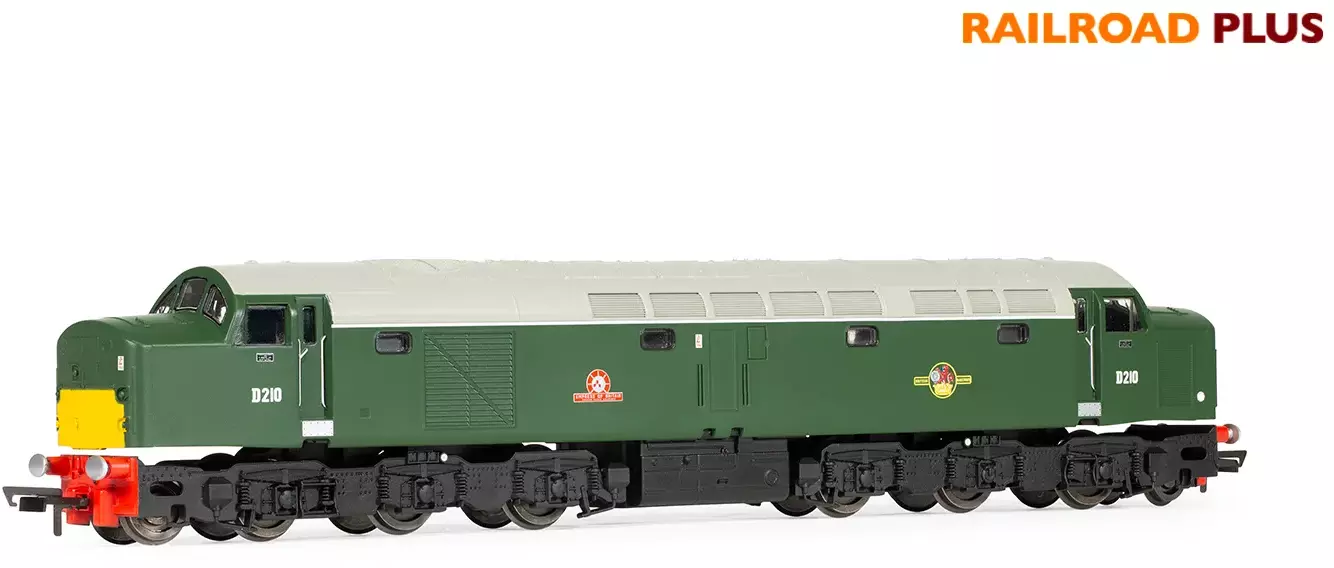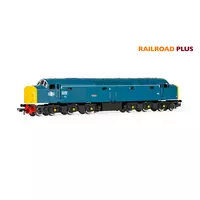Manufacturer catalogue image - please note that pre-release images may be CAD renders or CGI images rather than photographs
Prototype Eras
Era 5 (1957 to 1966) British Railways Late Crest
Era 6 (1967 to 1972) British Rail Blue (Pre-TOPS)
Manufacturer description
British Railways originally ordered ten Class 40s, then known as "English Electric Type 4s", as evaluation prototypes. They were to be used as replacements for steam locomotives, usually hauling passenger services. The prototypes were successful enough to warrant a further 190 production models.
It was initially worried that the locomotives lacked the power needed to maintain the speeds required on express services and as a result the capability to run in multiple was considered a main design feature. This resulted in the inclusion of small gangways at each end of the first 145 units. After this point it was realised that multiple running was rare and could be achieved without the gangways.
The first 125 units were built with a disk route identification. When unfolded the disks were white with a small hole to allow a light to shine through during the night. When the top half of the disk was folded down the back was painted so as to blend into the locomotive and make it clear the disk was not in use. A few locomotives forwent the disks and simply relied on lights or the more traditional lamps, lamp irons having remained a feature.
The disk system was soon abandoned in favour of the more modern headcode system, initially requiring split headcodes to accommodate the gangway doors. Once the gangway doors were abandoned the split headcode boxes were combined in a central position where the gangway doors had previously been.
The arrival of more powerful locomotives such as the class 47, 50 and 55 along with the electrification of the WCML made the Class 40s redundant, relegating them to freight duties for which they were not well suited. Withdrawals began in 1976 with the majority of locomotives being withdrawn in the early 1980s.
Locomotive D232 was built in 1959 and entered service in September that year. The locomotive was named 'Empress of Canada' in March 1961, named after the vessel operated by Canadian Pacific Steamships. Under the TOPS numbering system, the locomotive became 40032 in late 1973. The locomotive was withdrawn in February 1982 and scrapped at Swindon Locomotive Works.
Catalogue listing
Model details
Prototype information
* Class names often change over the lifespan of a locomotive, so this is not necessarily the class name used by the operator in the period modelled.
Supplier links are provided for your convenience and do not guarantee that the product is currently available. RailwayModels.uk is not a representative of these suppliers, but may receive a commission when purchases are made through links on this page.



